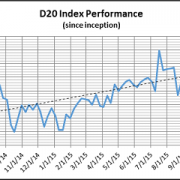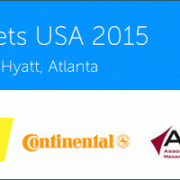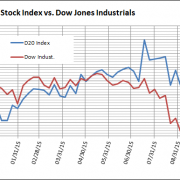Burney Simpson
The effort to bring automated and connected vehicles to widespread public use is like the race to the Moon of the 1960s. The technology is revolutionary, the scientists/researchers involved are brilliant, and it’s an exciting challenge for the nation.
So where do we stand? After attending the Connected and Automated Vehicles: 9th University Transportation Center Conference last week in Washington, D.C., I’d say we’re still pretty far from Apollo 11 landing on the Moon.
Hell, we’re closer to the ‘vomit comet’ where astronauts underwent simulated weightlessness exercises in dive-bombing jets. That said, the action around autonomous is moving fast.
The conference is designed to consider whether connected and automated vehicles (CAV) “can improve safety, reduce harmful emissions, and improve efficiency and reliability,” wrote Melissa Tooley, the conference chair and Center Director of the University Transportation Center for Mobility at the Texas Transportation Institute.
The answer was yes from the attendees, which included reps from leading technology providers, university research centers, state and federal regulators, insurance companies, new mobility houses, and others.
Here are some of the highlights:
FUEL SAVINGS
Truck platooning, where two or more trucks travel in tandem with one driver controlling the group, have proven they can reduce fuel use, said Kevin P. Dopart of the U.S. DOT.
In this Vehicle to Vehicle (V2V) communications exercise, the lead vehicle ![ContinentalARCreator1]() saved 4 to 5 percent on fuel costs, while a trailing vehicle saved 8 percent, said Dopart, program manager, ITS Vehicle Safety and Automation Program. A U.S. Department of Energy study showed even better savings.
saved 4 to 5 percent on fuel costs, while a trailing vehicle saved 8 percent, said Dopart, program manager, ITS Vehicle Safety and Automation Program. A U.S. Department of Energy study showed even better savings.
Dopart suggested that fuel use could be further reduced if a communication system allowed trucks from several freight operators, even competitors, to team up as they meet on a stretch of highway.
“Connecting is critical to reaching the full benefits” of autonomous technology, including reducing emissions and energy use, said Dopart.
CONSUMER ACCEPTANCE
Justin Holmes of Zipcar discussed the success of the car sharing firm which grew from a single station in Cambridge, Mass., to stations in 500 cities and towns serving 1 million members.
Zipcars’ success is considered a sign that Millennials prefer ‘access over ownership’ when it comes to cars, and may be open to sharing driverless cars for their transportation needs.
Holmes noted that Zipcar has found that consumers aged 50+ that live in cities have similar attitudes to transportation as Millennials, suggesting that the market for driverless cars goes way beyond the beard and tattoo crowd.
MOBILITY/PUBLIC TRANS
The analogy to the Space Race comes from Stanley E. Young, advanced transportation and urban scientist at the National Renewable Energy Laboratory.
Young updated the conference on the CityMobil2 tests that have gone on this year in about half dozen European cities of various sizes.
![driverless-237]() The vehicle is “a cross between a golf cart and an ice cream truck” and has been tested on a campus, a resort town, and a city center, and offered such applications as ‘last mile’, shopping, tourist, and urban transportation, said Young. The tests will help to create a legal framework for these systems, and a look at the social acceptance of driverless transportation, he said.
The vehicle is “a cross between a golf cart and an ice cream truck” and has been tested on a campus, a resort town, and a city center, and offered such applications as ‘last mile’, shopping, tourist, and urban transportation, said Young. The tests will help to create a legal framework for these systems, and a look at the social acceptance of driverless transportation, he said.
Young said similar tests include Milton Keynes in the U.K., the upcoming EasyMile in California, and various activities in Japan leading up to the 2020 Olympics in Tokyo.
Going forward, operators are considering running these vehicles in the most congested part of a city that will be designated the Urban Mobility District, and determining what kind of entity will own the program.
MAPPING/DATA
Jane Macfarlane, head of research at HERE showed off some of the maps her firm has been building from the myriad of data it collects. One challenge for mapping firms is big data reduction, or editing the huge amounts of data they can collect today, she said.
“The data must be good. I get data from many different places. I don’t control where it comes from,” said Macfarlane.
The second issue is manipulating the data so the vehicle owner/driver receives “hyper-local” information, or something that is actionable.
INSURANCE/REGS
Nevada DMV’s Jude Hurin said there’s a need for federal oversight of driverless vehicles because the technology is revolutionary and changes vehicles and driving (See “Driverless Cars Will Need Federal Regs: DMV, Insurance Execs,” November 6).
“Driver training will become very important. Each auto OEM may come out with its own version of an autonomous vehicle,” said Hurin, who is vice chairman of the AAMVA Autonomous Vehicles Best Practices Group.
One approach may be to give an organization like NHTSA the authority to set minimums on the technology, on driver training, on insurance, and other driving basics that states now oversee, said Hurin. The states could then work with those minimums to create their own rules.
“We can’t create minimums after the technology goes live,” he said.
Allstate’s Edward Collins said consumers will have to learn that driverless technology doesn’t mean they just push a button and the car drives itself.
“We will have to teach drivers how to behave in these new vehicles,” said Collins. “Someone must be able to take over. This is like planes today” where much of the pilot’s work is done via computer.
Allstate believes that CAV technology and the sharing economy could lower ![DOTstop1]() car ownership as much as 50 percent. In response, insurers may cover the driver and her lifetime driving record, in contrast to covering the driver and her car, said Collins, Allstate’s vice president and assistant general counsel.
car ownership as much as 50 percent. In response, insurers may cover the driver and her lifetime driving record, in contrast to covering the driver and her car, said Collins, Allstate’s vice president and assistant general counsel.
There may be fewer accidents in the driverless world but their severity may increase, in part because the equipment is getting so complex and expensive, said Collins. For instance, Mercedes’ high-tech windshields now can cost as much as $1,500 and a Lexus bumper $1,200.
Bottom line, the need for CAV technology keeps growing, with a 14 percent rise in traffic deaths and a 30 percent increase in serious injuries in the first six months of the year. While cars are safer, drivers are getting worse due to an epidemic of distracted driving, said Collins.
All in all the Connected and Automated Vehicles conference served as a roundup of work going in the driverless industry, bringing together some of the top researchers in the field.



